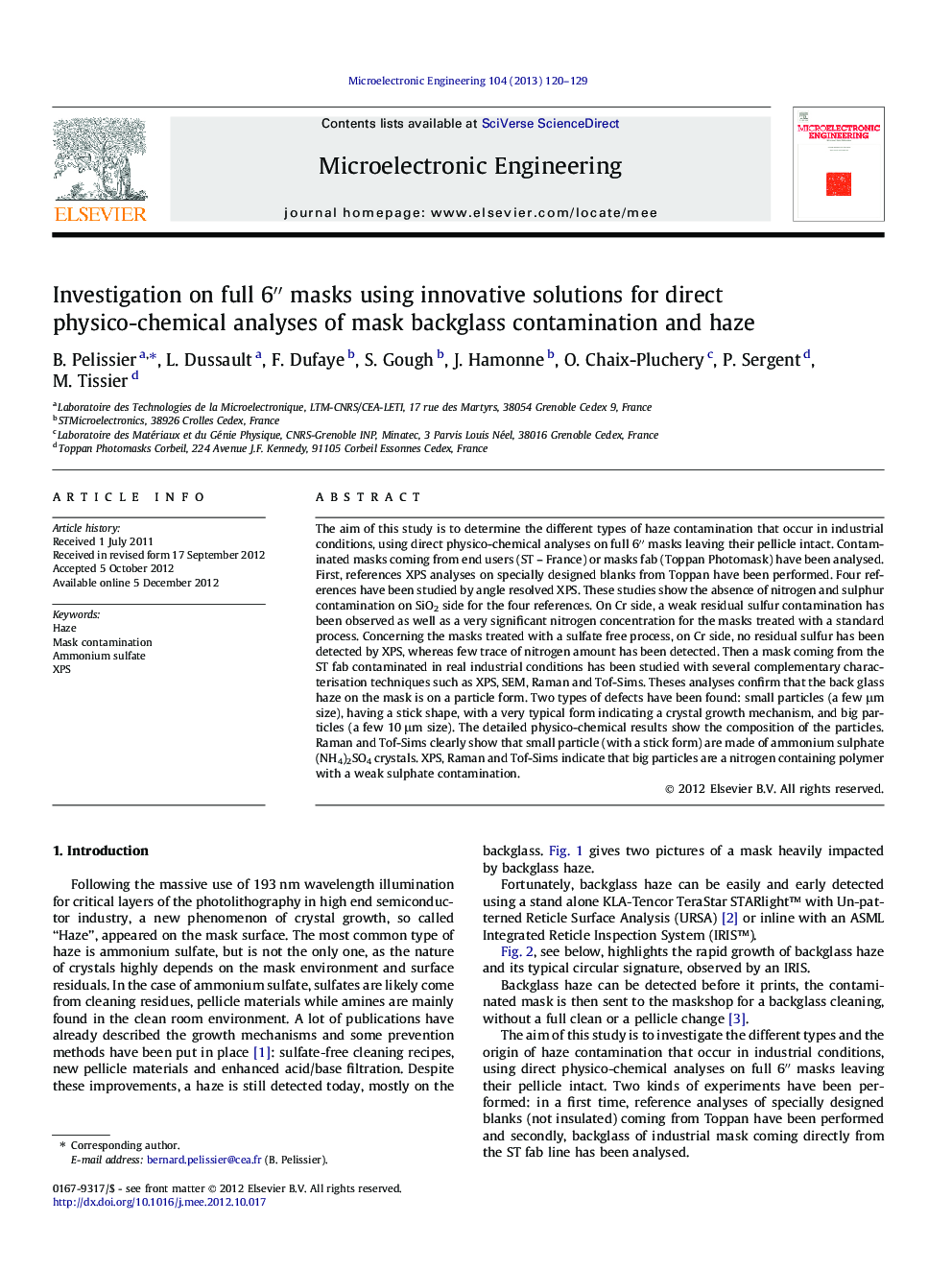| Article ID | Journal | Published Year | Pages | File Type |
|---|---|---|---|---|
| 540182 | Microelectronic Engineering | 2013 | 10 Pages |
The aim of this study is to determine the different types of haze contamination that occur in industrial conditions, using direct physico-chemical analyses on full 6′′ masks leaving their pellicle intact. Contaminated masks coming from end users (ST – France) or masks fab (Toppan Photomask) have been analysed. First, references XPS analyses on specially designed blanks from Toppan have been performed. Four references have been studied by angle resolved XPS. These studies show the absence of nitrogen and sulphur contamination on SiO2 side for the four references. On Cr side, a weak residual sulfur contamination has been observed as well as a very significant nitrogen concentration for the masks treated with a standard process. Concerning the masks treated with a sulfate free process, on Cr side, no residual sulfur has been detected by XPS, whereas few trace of nitrogen amount has been detected. Then a mask coming from the ST fab contaminated in real industrial conditions has been studied with several complementary characterisation techniques such as XPS, SEM, Raman and Tof-Sims. Theses analyses confirm that the back glass haze on the mask is on a particle form. Two types of defects have been found: small particles (a few μm size), having a stick shape, with a very typical form indicating a crystal growth mechanism, and big particles (a few 10 μm size). The detailed physico-chemical results show the composition of the particles. Raman and Tof-Sims clearly show that small particle (with a stick form) are made of ammonium sulphate (NH4)2SO4 crystals. XPS, Raman and Tof-Sims indicate that big particles are a nitrogen containing polymer with a weak sulphate contamination.
Graphical abstractFigure optionsDownload full-size imageDownload as PowerPoint slideHighlights► XPS analyses of full 6′′ mask with their pellicle coming directly from the fab. ► Contamination: (NH4)2SO4 crystals and nitrogen containing polymer particle. ► Comparison between real industrial contamination and accelerated test conditions. ► A contamination growth mechanism has been suggested.
